Could “Enjoyment” be the Single metric for Everything?
Please check, “Are you enjoying what you are doing?”
To be honest, this is a very deep subject and deserves a detailed and comprehensive investigation. And I promise to write such an article later this month. This post is a quick exploration of the subject since the subject kept knocking on the doors of my mind this morning and refused to go away until I wrote something about it.
I say it is a complex subject because we would need to go into various terms in English and Sanskrit and other languages that are similar to, close to or same as enjoyment and their etymologies, various definitions, concepts and interpretations. And, we will do all that. But for now, please consider the simplest meaning of the term “enjoyment” and whatever it means to you.
When I say, “Enjoyment” I mean the feeling of being fully immersed in something such that you experience the idea “all is well with the world and me” – a sense of stithi where things are in balance. A kind of equilibrium. But also a high note. A feeling of being elated.
Let me share some dictionary meanings here:
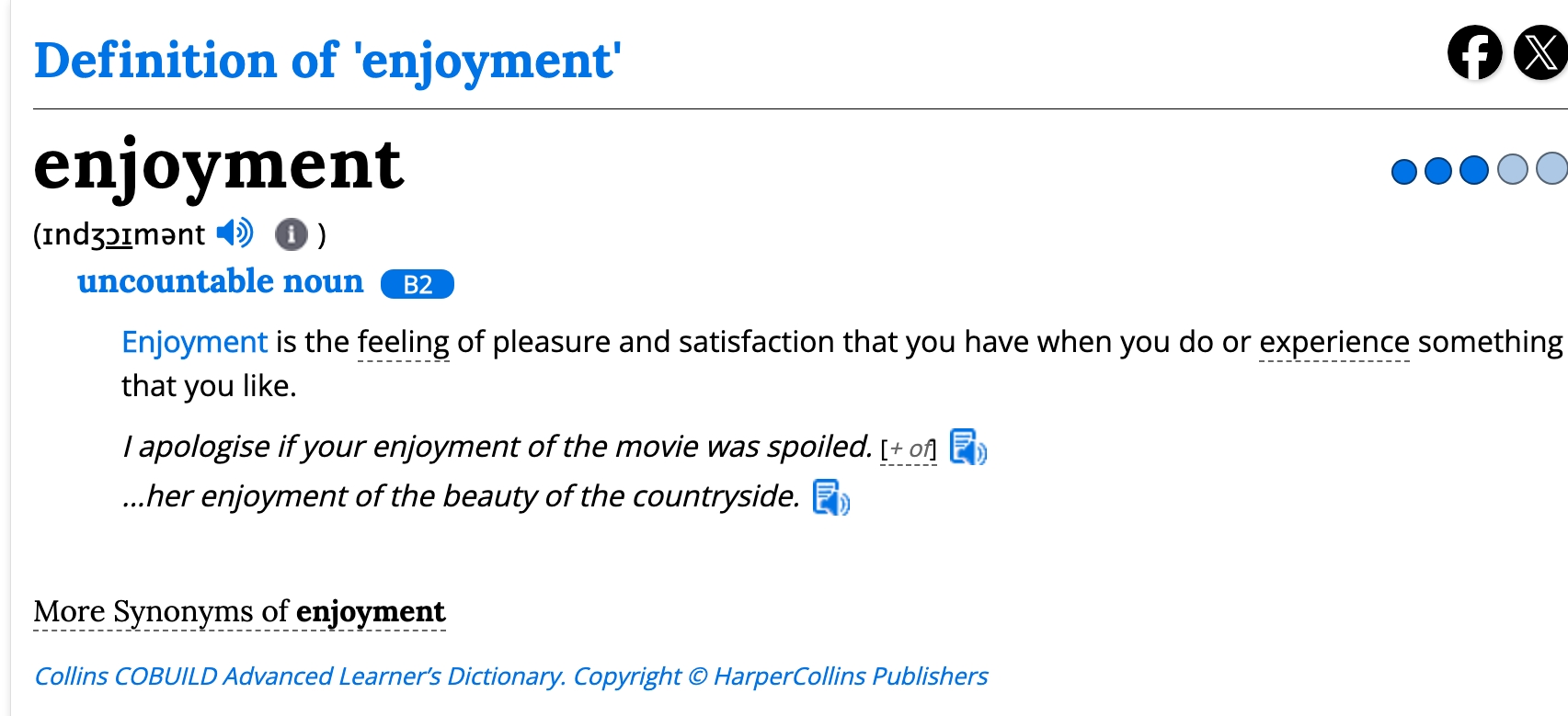
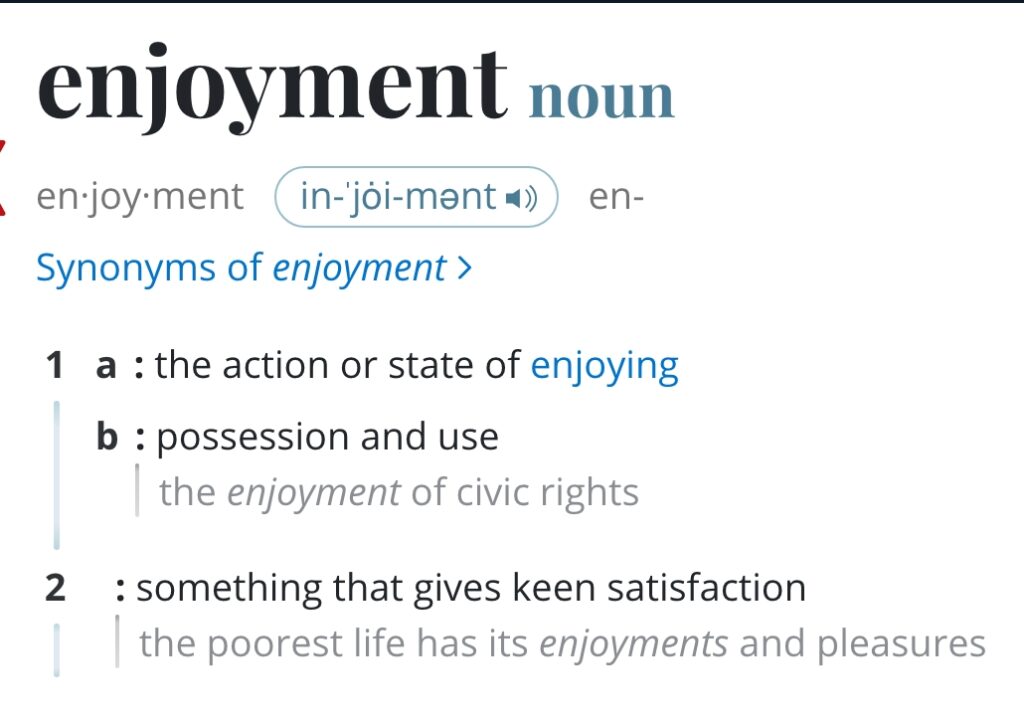

Quoting Sri Aurobindo on this topic:
The Gunas and the Qualities of HappinessPosted on
The “pursuit of happiness” is considered by many to be one of the primary directives of human life, and is even enshrined as a guiding principle in the U.S. Declaration of Independence. Happiness, however, is not something that can be understood universally, as there are different forms and definitions of happiness. To the Upanishadic sages, true happiness was determined to be a state of bliss, achieved by overcoming the force of desire! For most of humanity however, happiness is a much more qualified state of consciousness, and its character is determined by the predominance of one or another of the three Gunas.
Sri Aurobindo describes these differences: “…the tamasic mind can remain well-pleased in its indolence and inertia, its stupor and sleep, its blindness and its error. Nature has armed it with the privilege of a smug satisfaction in its stupidity and ignorance, its dim lights of the cave, its inert contentment, its petty or base joys and its vulgar pleasures. Delusion is the beginning of this satisfaction and delusion is its consequence; but still there is given a dull, a by no means admirable but a sufficient pleasure in his delusions to the dweller in the cave.”
“The mind of the rajasic man drinks of a more fiery and intoxicating cup; the keen, mobile, active pleasure of the senses and the body and the sense-entangled or fierily kinetic will and intelligence are to him all the joy of life and the very significance of living. This joy is nectar to the lips at the first touch, but there is a secret poison in the bottom of the cup and after it the bitterness of disappointment, satiety, fatigue, revolt, disgust, sin, suffering, loss, transience.”
“What the sattwic nature seeks, therefore, is the satisfaction of the higher mind and the spirit and when it once gets this large object of its quest, there comes in a clear, pure happiness of the soul, a state of fullness, an abiding ease and peace. This happiness does not depend on outward things, but on ourselves alone and on the flowering of what is best and most inward within us….it has to be conquered by self-discipline, a labour of the soul, a high and arduous endeavour.”
“The self-exceeding of the sattwic nature comes when we get beyond the great but still inferior sattwic pleasure, beyond the pleasures of mental knowledge and virtue and peace to the eternal calm of the self and the spiritual ecstasy of the divine oneness. That spiritual joy is no longer the sattwic happiness…, but the absolute Ananda. Ananda is the secret delight from which all things are born, by which all is sustained in existence and to which all can rise in the spiritual culmination. Only then can it be possessed when the liberated man, free from ego and its desires, lives at last one with his highest self, one with all beings and one with God in an absolute bliss of the spirit.”
Sri Aurobindo, Essays on the Gita, Second Series, Part II, Chapter 19, The Gunas, Mind and Works, pp. 487-489

You can see that talking about simple enjoyment is perhaps not that simple. One may get enjoyment from eating an ice cream, eating a pizza, drinking a cup of coffee or a can of beer, watching a movie or talking to a friend. In the light of Sri Aurobindo’s distinctions between different types of joy/happiness and the pedestal being given to “Ananda”, should we simply ignore these simple joys of life?
So which joy Am I talking about, you may ask!
Let us look at what the ancient Indian texts have to say on this subject. The Upanishads and the Vedas provide profound insights into different types of happiness, often categorizing them into material, sensory, and spiritual forms.1. Ānanda (Bliss)
• Definition: The highest form of happiness; eternal and spiritual in nature. It is described as the essential nature of the Self (Ātman) and Brahman.
• Source:
• Taittirīya Upanishad (2.7.1):
“Ānando brahmeti vyajānāt”
Translation: “Bliss is Brahman, as it is realized.”
• Taittirīya Upanishad (2.8):
The Upanishad describes the “scale of bliss” (ānanda-mimāṁsā), comparing the happiness of humans, celestial beings, and ultimately the bliss of Brahman.
2. Sukha (Pleasure or Happiness)
• Definition: Happiness derived from comfort, ease, or worldly enjoyment. It is often contrasted with duḥkha (suffering) and described as fleeting or impermanent.
• Source:
• Bhagavad Gītā (5.22) (Derived from Vedic concepts):
“Ye hi saṁsparśajā bhogā duḥkhayonaya eva te…”
Translation: “The pleasures born of sense contact are sources of misery, as they have a beginning and an end.”
• Bṛhadāraṇyaka Upanishad (4.4.12):
Describes that sensory pleasures (sukha) are temporary and bound by the cycle of birth and death.
3. Priya, Moda, and Pramoda (Sequential Joys)
• Definition: Three sequential stages of joy experienced through desires fulfilled at progressively deeper levels of the mind.
• Source:
• Taittirīya Upanishad (2.5):
“Priyam, modam, pramodam iti…”
Explanation:
• Priya: The joy of perceiving something desirable.
• Moda: The joy of attaining the desired object.
• Pramoda: The heightened joy of experiencing and enjoying the object.
4. Vihāra (Recreational Happiness)
• Definition: Happiness derived from leisure, rest, and recreation. It aligns with physical and mental relaxation.
• Source:
• Chāndogya Upanishad (7.1.2):
Discusses that happiness comes from proper balance and rest, aligning with mental and physical health.
5. Bhoga (Sensory Enjoyment)
• Definition: Pleasure derived from the experience of sensory objects, often material in nature and transient.
• Source:
• Atharva Veda (4.34.6):
“Man may enjoy the fruits of this Earth…”
(Implies the temporary nature of material enjoyment.)
• Kaṭha Upanishad (1.2.26):
Describes the contrast between śreya (the ultimate good) and preya (sensory pleasures). Happiness derived from bhoga belongs to the latter.
6. Contentment (Santoṣa or Toṣa)
• Definition: A state of inner peace and satisfaction, independent of external conditions.
• Source:
• Maitrī Upanishad (6.34):
“Contentment is the highest happiness.”
This verse emphasizes that contentment (santoṣa) is a pathway to liberation and true peace.
7. Śānti (Peaceful Joy)
• Definition: Happiness arising from peace of mind, achieved through self-realization and freedom from desires.
• Source:
• Chāndogya Upanishad (7.23.1):
“Śāntaḥ, dantaḥ, uparataḥ…”
Translation: “Peaceful, self-controlled, and withdrawn from external desires, one finds joy in the Self.”
• Kaṭha Upanishad (2.2.13):
“When the senses are withdrawn and the mind rests in the Self, supreme peace is experienced.”
8. Brahmānanda (Cosmic Bliss)
• Definition: The ultimate happiness that arises from realizing one’s unity with Brahman, transcending all dualities.
• Source:
• Bṛhadāraṇyaka Upanishad (4.3.32):
“Yo vai bhūma tat sukham…”
Translation: “The infinite alone is bliss; there is no bliss in anything finite.”
• Taittirīya Upanishad (2.1):
Describes the state of union with Brahman as the highest bliss.
9. Kaivalya (Liberation Bliss)
• Definition: The happiness of ultimate liberation (mokṣa), where the individual soul merges with the universal consciousness.
• Source:
• Kaivalya Upanishad (1.14):
“Brahmāṇandam paramasukhadam…”
Translation: “Supreme bliss is attained through liberation.”
10. Niratiśaya Ānanda (Unsurpassed Bliss)
• Definition: The transcendental and infinite joy beyond all dualities and concepts, often associated with the realization of the non-dual reality.
• Source:
• Māṇḍūkya Upanishad (7):
Describes Turīya, the fourth state of consciousness, as the state of absolute bliss.
Now, according to Yogic anatomy, a human being has 5 types of bodies instead of the one type of body we all know and identify with – the gross body or the physical body. There are four other bodies which are collectively called as the “Sukshma Sharira” or the “Subtle Body” (also bodies).These are the Pranamaya kosha (Energy Body), Manomaya Kosha (Mind Body), Vijnanamayakosha (Causal Body or the Karana Sharira) and the Anandamaya Kosha (Bliss Sheath or Super Causal Body).
The concept of Ānanda (bliss) associated with the five koshas (sheaths) comes from the Taittirīya Upanishad (2.1–2.5). These koshas represent different layers of human existence, progressing from the gross physical body to the subtlest spiritual essence. Bliss is most fully realized in the innermost sheath, Ānandamaya Kośa. Here’s how each kosha relates to happiness or ānanda:1. Annamaya Kośa (Sheath of Food or Physical Body)
• Nature: The outermost layer, consisting of the physical body nourished by food.
• Type of Happiness: Sensory pleasure or physical comfort derived from the material world.
• Characteristics:
• Temporary and limited to physical sensations.
• Dependent on external factors like health, food, and physical environment.
• Source:
• Taittirīya Upanishad (2.1):
“Annamayaṃ ātmā” – “The self identified with the body is made of food.”
2. Prāṇamaya Kośa (Sheath of Vital Energy)
• Nature: The sheath of prāṇa (life force) responsible for physiological functions like breathing, circulation, and digestion.
• Type of Happiness: Vitality and well-being that arise from good health and proper energy flow.
• Characteristics:
• Linked to the satisfaction of physiological needs (e.g., breathing, movement).
• Dependent on the proper functioning of prāṇa.
• Source:
• Taittirīya Upanishad (2.2):
“Prāṇamayaṃ ātmā” – “The self identified with the vital energy is made of prāṇa.”
3. Manomaya Kośa (Sheath of Mind)
• Nature: The mental sheath, associated with thoughts, emotions, and sensory perception.
• Type of Happiness: Emotional and intellectual satisfaction derived from mental activities and relationships.
• Characteristics:
• Includes happiness from fulfilling desires or resolving conflicts.
• Limited by the duality of pleasure and pain. Still under the influence of dwandva.
• Source:
• Taittirīya Upanishad (2.3):
“Manomayaṃ ātmā” – “The self identified with the mind is made of thoughts.”
4. Vijñānamaya Kośa (Sheath of Wisdom)
• Nature: The intellectual sheath responsible for knowledge, discernment, and higher understanding.
• Type of Happiness: Joy from wisdom, understanding, and alignment with dharma (righteousness).
• Characteristics:
• Associated with deeper fulfillment through intellectual growth and spiritual inquiry.
• Reflects a more sustained form of happiness, less dependent on external factors.
• Source:
• Taittirīya Upanishad (2.4):
“Vijñānamayaṃ ātmā” – “The self identified with the intellect is made of wisdom.”
5. Ānandamaya Kośa (Sheath of Bliss)
• Nature: The innermost sheath, representing the pure bliss of self-realization.
• Type of Happiness: Supreme and eternal bliss, transcending all dualities and attachments.
• Characteristics:
• Not dependent on external objects or conditions.
• Represents the natural state of the self (Ātman) in union with Brahman.
• Experienced fully in states of deep meditation or liberation (mokṣa).
• Source:
• Taittirīya Upanishad (2.5):
“Ānandamayaṃ ātmā” – “The self identified with bliss is made of ānanda.”
While happiness is experienced at all levels of the koshas, it becomes progressively subtler and more profound as one moves inward. The Ānandamaya Kośa represents the ultimate realization of bliss, which is eternal and unconditioned, aligning with the nature of Brahman
Accepting that the bliss associated with the Anandamayakosha is what we are really after, let us look at simple examples of bliss from ordinary life:
Work: Are you enjoying the work you are doing? Is your chosen profession yielding a sense of satisfaction and enjoyment? Do you find it meaningful? Is it aligned with your life goals? If not, what can be done to make it so?
Food: The food that you consume – is it enjoyable? Do you look forward to eating that food and does it make you feel satisfied and at the same time does not cause discomfort to your body? Is it “hithakara” – good for you overall? Does your food make you calm and peaceful? Or is it only tasty to the tongue but later you suffer in body and mind? Good food will satisfy you but make you forget about food and look forward to taking up your next task or project! If this is not the case, what is it about the food you are eating that is problematic? What can be done to change it for the better?
Conversations: Look back over the last several weeks and months at the conversations you have had with various people in your life – family, close relatives, friends, colleagues etc – are these conversations meaningful, deeply satisfying, transformative, enlightening and blissful? Do you look forward to these conversations? Do you get a feeling of “moving forward” in your life’s journey through these conversations? If not, what can be done to make them so?
Entertainment: What do you for entertainment? Do you need it? Most people watch TV, go to the movies, malls, bars, pubs, restaurants, parties etc. Whatever maybe your chosen option – are you truly enjoying it? Does it leave you deeply satisfied and refreshed? If that is not the case, what can you do to make it so?
Sleep: Do you enjoy your sleep? Does it leave you deeply rested and ready to take on the world? If not what can be done to make it so?
Exercise: Do you truly enjoy the exercise you do? Or do you do it grudgingly and want it to end before you have even begun it?
If you were to thus enumerate all the things that take up time in your life and ask the question, “Do you truly enjoy it?” what do you get? If you were to assign percentage to the enjoyment of various activities, what do you get? What percentage of your life are you truly enjoying?

By enjoyment I mean:
- That which enlivens you
- That with invigorates you
- That which does not harm anyone or yourself
- That which does not interfere with someone else’s life or activity
- That which is good for you and for the society overall!
- That which does not lead to overindulgence, addiction and other behavioural disorders
- That which gives you energy and inspires you to do more and better
- That which brings a smile to your face
- That which brings you closer to yourself
- That which makes you forget the passage of time when you are doing it
- That which makes you feel nourished
- That which reminds you of your mother’s warm embrace and your father’s tight hug!
- That which you look forward to all the time
- That which wakes you up in the morning and gets you out of the bed!
- And, that which does not let you sleep!
This is in brief. Add your own. Share your definitions. But do investigate and explore!
Are you having a good time being on this planet? Or not?
Feel free to email me your thoughts (vk*******@al****.com) or share in the comments section!


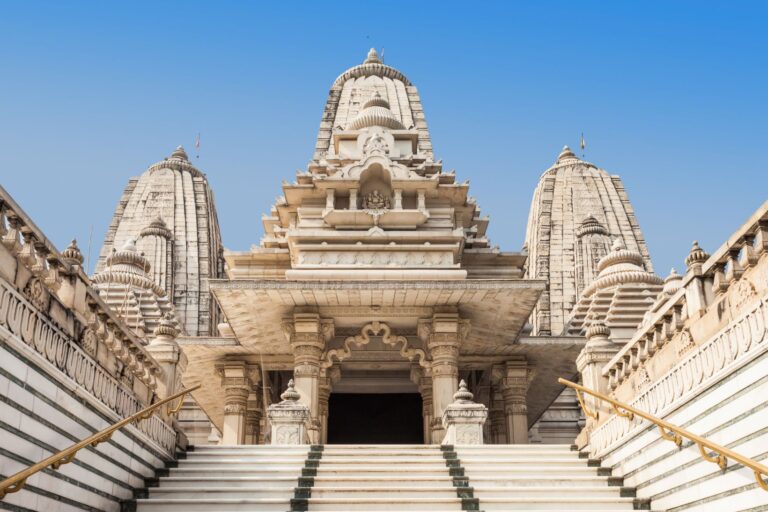

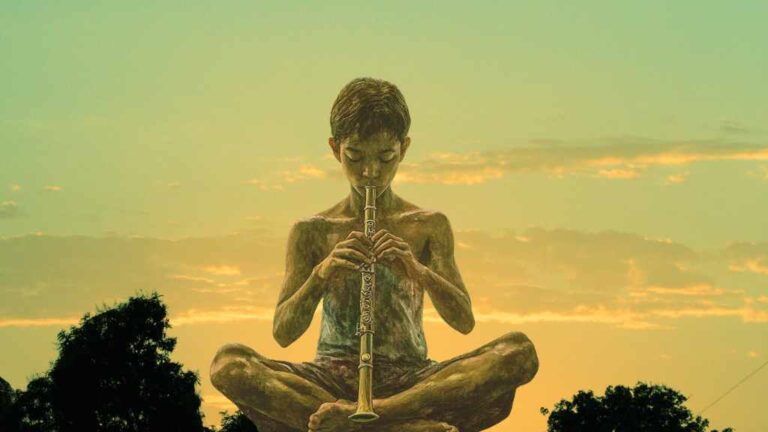
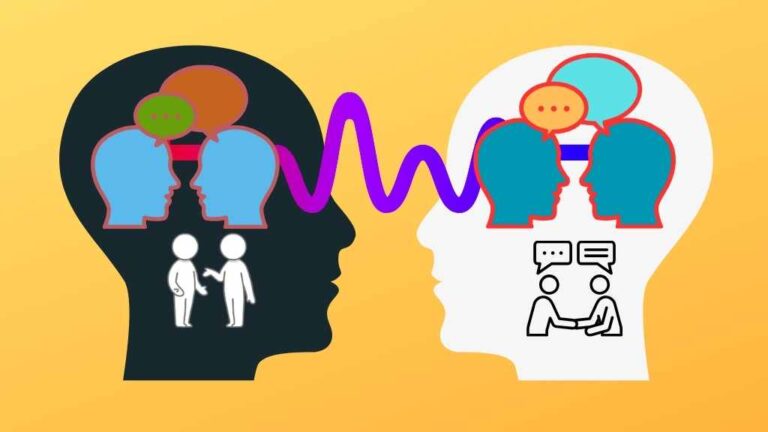


armva9
9p5ha7